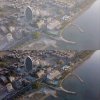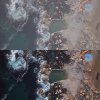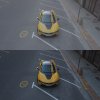Wonderful read!
I see that the latest post was from May 2018, has there been any changes by now? Any firmware updates I am unaware of that changes what I've learned by reading this thread?
I totally get that there is no perfect setting, it all depends on what you are shooting (high up few details or lower down high details etc.). If I´ve understood correctly most people here suggest using -1 sharpness (-1, -1, -1) for less noise/sharpening. I have read elsewhere that a +1 setting is suggested for sharpness as this supposedly deactivates the "denoise algorythm" within the Mavic Pro (platinum in my case). But in my case I get terrible moire issues (both 2,7K and 4K, but worse with the latter) in certain settings as well as terrible "blinking" noise in darker detailed areas like trees.
I will test -1, -1, -1 today and stay with 2,7K (usually I output 1080p anyways, and I like saving space on the memory card).
Also, as I don't mind post processing, should I stay with D-log? I am reading conflicting opinions out there. "Stay with D-log as it maximises the dynamic range" and "Might as well use Cinelike as the sensor is so bad anyways that the minute increases in dynamic range does not defend the increase in work in post". Any inputs?
I guess I should summarize:
Q1: Has there been any changes in firmware the past 9 monhts, or do the information in this thread still apply (e.g. sharpness -1, 2,7K "better" than or at least as good as 4K, 2,7K still is limited to 45 Mbit/s)?
Q2: Is it possible to state what the avarage "best" option for the Mavic Pro is? 2,7K, -1, -1, -1, D-log/Cinelike?
Q3: If I don't mind the extra work in post, should I stay with D-log or use Art or Cinelike (if they ease work load without markedly reducing the quality)
Q4: Bonus question

p): I am somewhat familiar with the 180 dgr. rule and thus using twice the shutter as fps (e.g. 25 fps, shutter 1/50.). This creates a look similar to Hollywood movies and dates back to when circular shutters were used, if I've understood correctly. BUT, besides the "cinematic look"/blur, are there other benefits of using this "cinematic shutter" in terms of video quality, noise, moire, etc.?
Thank you all for this wonderful thread, especially to those of you who have spent hours in the fields testing different settings making it easier for folks like myself to maximize quality from this drone =) It sure does have it's limitations, but I will always strive towards best possible results.















